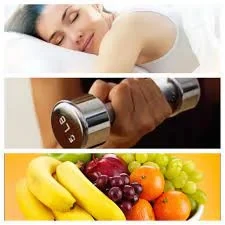
By Ricardo E. Colberg, M.D.
You may have thought that a sports orthopaedic center would be a place to go only after a catastrophic sports injury—something breaks or tears or starts hurting so badly you can’t physically use it.
“Most athletic injuries seen in sports clinics are indeed overuse injuries that have reached a point of taking the patient out of the game,” said Dr. Ricardo Colberg of Andrews Sports Medicine & Orthopaedic Center. “Although 85% of sports injuries do not require surgery, many patients wait until they are unable to compete to start correcting their issues.”
Our four non-surgical sports medicine physicians (Dr. Casey, Colberg, Miner & Ortega) diagnose and rectify a large percentage of patient cases at Andrews Sports Medicine & Orthopaedic Center. Most athletic injuries are overuse injuries, meaning we can intervene with a variety of tools before they become severe enough for surgery: physical therapy including biomechanical assessments and training modalities, braces and sleeves, custom diets, pain-relieving medicines, sports psychology, and regenerative tissue injections.
Visiting a sports medicine physician can curtail an injury waiting to happen and help you or your child reach higher levels of athletic performance. If you are proactive in managing the three pillars of athletic health, your odds of progressing without injury improve greatly.
Rest
Americans sleep two hours less on average per night than they did a century ago. Doctors have known for years that sleep deprivation worsens every condition and performance measure. During sleep, your body is like a smart dishwashing machine that identifies and scrubs items that are especially dirty.
The body interprets missed sleep as a stressful event, which triggers higher blood pressure, alertness, a faster heartbeat, etc. Simply being awake should not put a drain on our resources that will be needed for performance. Worse still, nutrient partitioning changes in a high-stress state—muscle building and other types of healing are halted and fat is stored via the hormone cortisol.
Eight to ten hours of sleep is required through high school. Adults may decrease their need by a few hours incrementally, but almost no one is getting enough sleep unless they’re getting closer to those vital eight hours.
Strength & Conditioning
Strength and conditioning are the activities athletes willfully do to prepare for their sport. Training goes wrong when it is not balanced throughout the body and also because it is either too sport-specific or not specific enough for long periods.
All sports benefit from strong major muscle groups—muscles that act on the hips, knees, and shoulders. ACL tears are often caused in part by quad dominance; runner’s knee results from instability at abs and hips; shoulder tears and tightness often accompany weak back muscles. Many sports also place special force demands on smaller muscle groups: soccer players stress the psoas and hip flexors in a different way than football players; baseball players stress their rotator cuffs; volleyball players use their adductors more than other sports.
Our team provides balance and specific protocols for weak links.
Nutrition
Different populations have different nutritional hurdles. Every athlete needs carbohydrates around strenuous activities—fast-digesting ones that the body can access immediately. Hydration during activity is important, and we often recommend switching to a sports drink around 30 minutes into a session.
Maintaining muscle gained during the off season is another key concern for athletes. Protein not only allows us to build muscle tissue, it spares other nutrients for optimal usage.
Good fats are also important for transporting vitamins, producing hormones, protecting joints, and regulating metabolism for athletes.
Finally, getting your vitamins from food is important, as they are absorbed more readily into the bloodstream. That means fresh vegetables and fruits.
For more information about these three pillars of athletic performance and what Andrews Sports Medicine & Orthopaedic Center can do for you to stay in fighting shape, check out this link.







